Teaching fractions is not an easy task! We know that it’s a topic that year after year, students struggle with. It’s like teaching about the distributive property or elapsed time … We dread when those units come up in our curriculum guides. So what is it about the teaching of fractions that we can do differently so our students don’t ride the struggle bus? Let’s start by understanding…
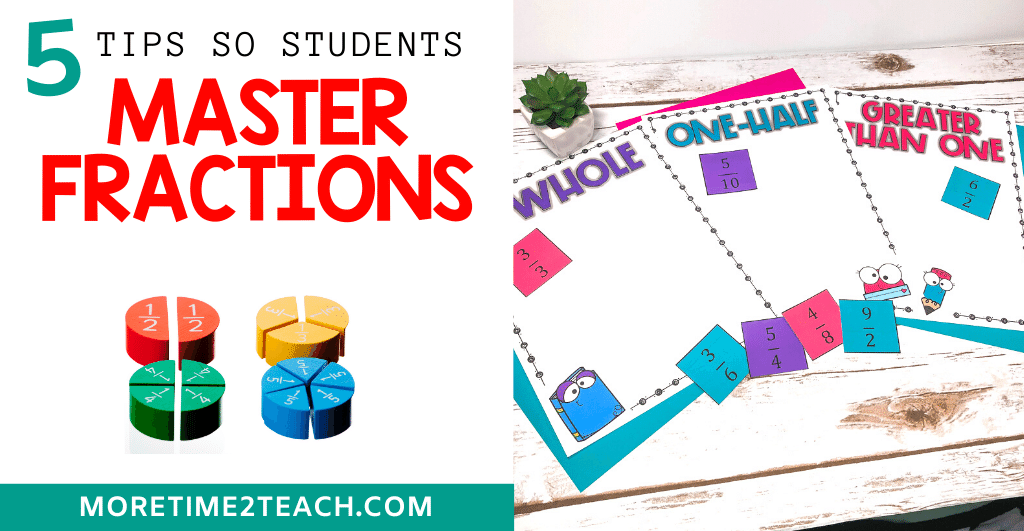
Why are fractions so difficult?
When kids are in kindergarten they learn how to count 1, 2, 3. They also learn that 1 means 1 of something like… 1 apple or 1 block. They learn that each whole number represents a certain number of objects. They also learn that as they count on, numbers get bigger. Basically, they learn a set of number rules.
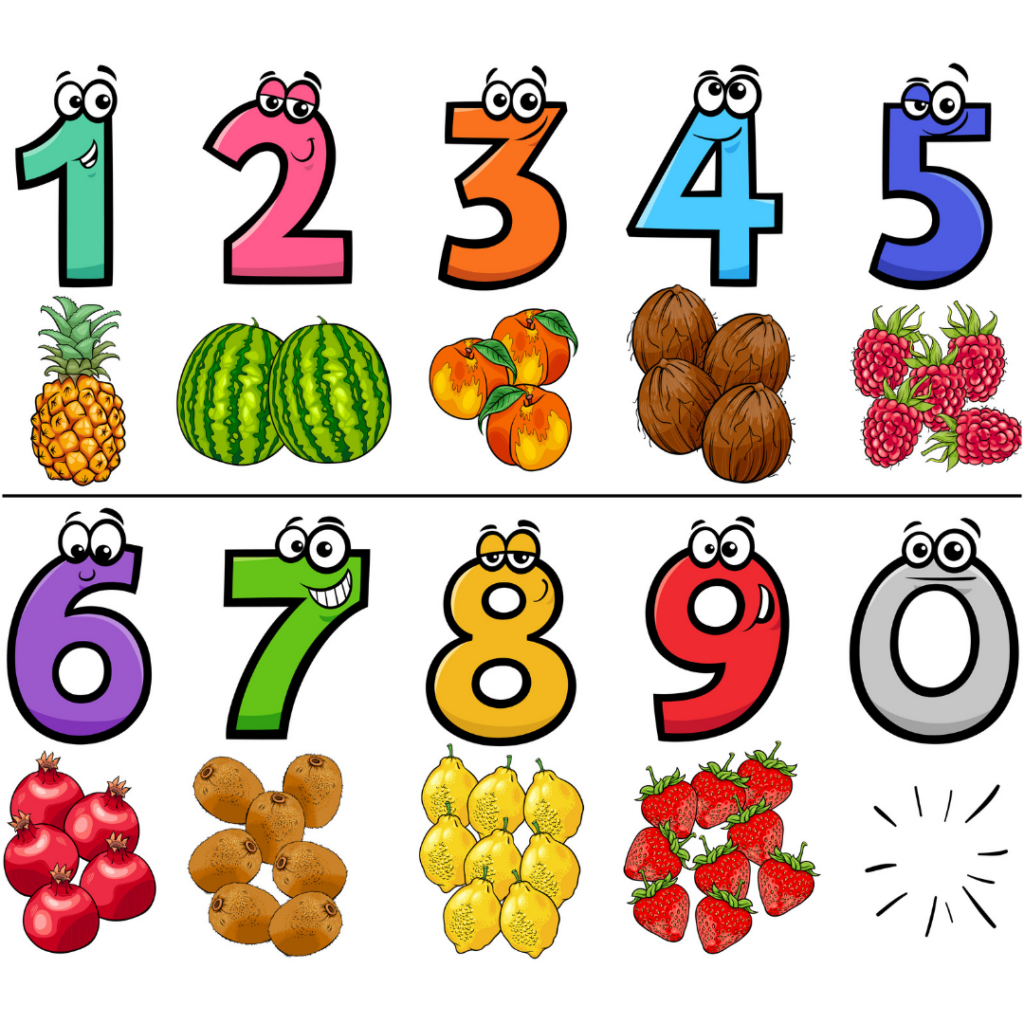
Fractions, however, follow a different set of rules. For example, fractions don’t always mean the same thing… 1/2 of a pizza is not the same as 1/2 of 4 pizzas. Also, when the denominator in a fraction increases, its value decreases.
NO WONDER OUR KIDDOS ARE CONFUSED! They’re trying to use what they know about whole numbers to solve problems involving fractions.
How can we help our students when teaching fractions?
By making a few simple changes in how we introduce fractions and helping our kiddos truly understand what a fraction represents, we can set them up for future success.
Hands on Practice
One of the best things we can do while teaching fractions is to give our students plenty of time to experiment with manipulatives or visual models. Fractions are such an abstract concept. For some kids, visualizing parts of a whole can be difficult. When we use manipulatives, we make the concept more concrete.

I personally love to start my fraction unit by having students create their very own fraction bars. Or you can use plastic fraction bars similar to these. If you have a magnetic whiteboard, these magnetic fraction bars and fraction circles would be perfect (found on Amazon). If you have a little more time or have students that struggle with fine motor skills, you can make these pool noodle fraction bars.
Regardless of the manipulatives you choose, make sure you give your kiddos plenty of time to experiment. Also, many of us tend to stick to fraction bars because that’s what we’re most comfortable with. But don’t forget to let them experiment with fraction circles, pattern blocks, and even cuisenaire rods.
Don’t have a set of fraction bars right now or have students working remotely? No problem, I’ve got you covered with printable fraction bars. Just sign up down below.
Understand the Parts of a Fraction
When teaching fractions, I like to begin with the denominator first. I tell my students that the bottom number tells us 2 things. It tells us how many equal parts our whole is divided into or how many groups in a set. It also tells us what to call these parts. So a 6 in the denominator means that the whole has been broken into 6 equal parts. It also means that the parts are called sixths.
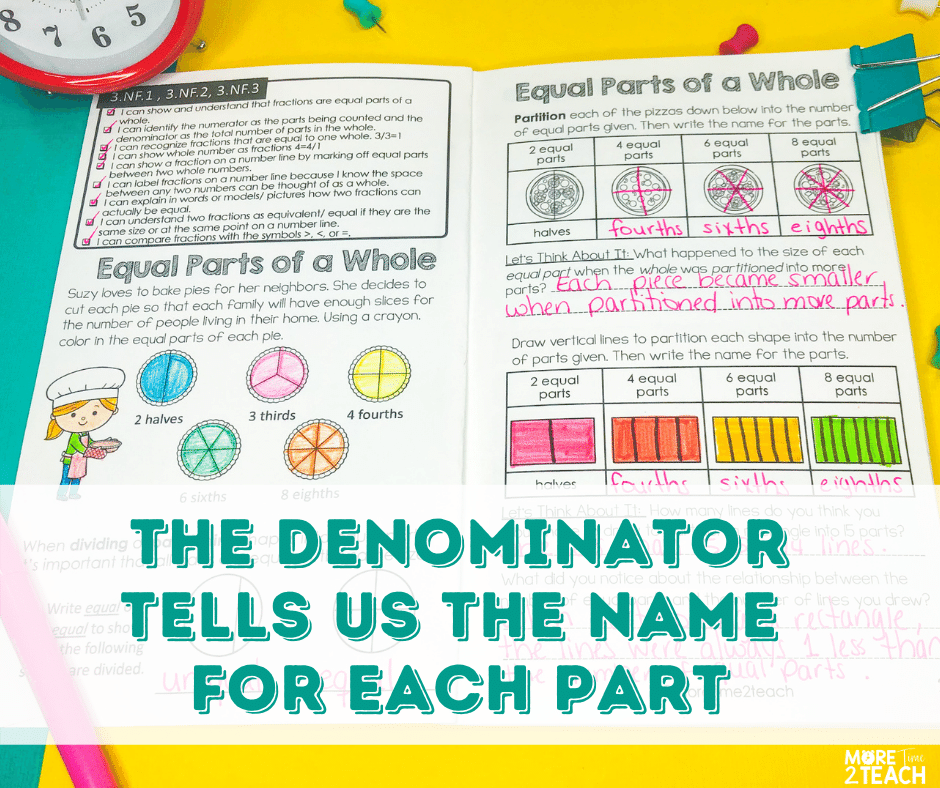
The top number, or numerator, is how many of those parts we have. So when we see the fraction 2/6 that means that we have 2 out of 6 parts or 2 out of 6 groups.
Equal Parts
When learning about fractions, it is imperative that students understand that the parts of a whole must be equal. This is especially important to keep in mind when they start comparing fractions.
I tell my students to think about a time when they asked a friend to share a cookie or a candy bar. What would they think if their friend gave them a tiny piece and didn’t cut the cookie into equal shares? They probably wouldn’t like that! They’d probably even say that it wasn’t fair. Well, we need our students to realize that the same thing happens with fractions. In order to partition a cookie, a shape, a pizza, or some other object or group, all the parts have to be equal.
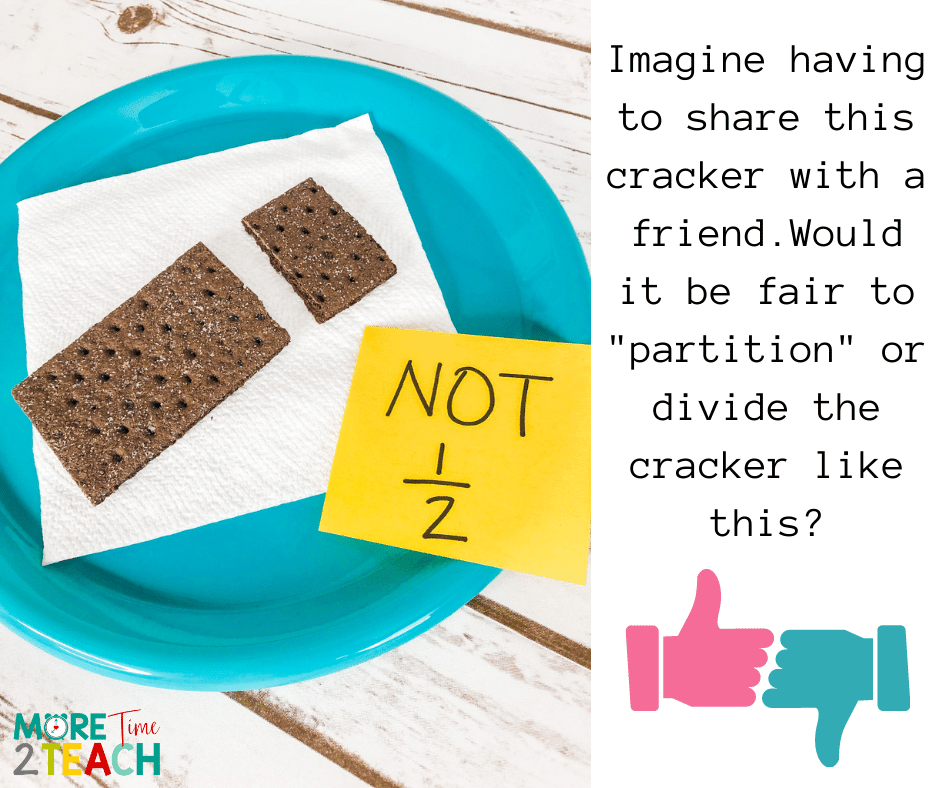
When it comes to fractions, fairness is key!
Parts of a Whole
It’s very important that students understand that a fraction is used to represent parts of a whole or part of something such as a circle, a rectangle, or a pizza.

A whole can also refer to several items or a set. It’s common practice to teach these two topics separately which usually leads to confusion. However, if we start off from the beginning showing that “a whole” can mean 1 thing or several things grouped together to make up a set, our students will develop a stronger conceptual understanding and be better prepared for when we move on to fractions on a number line.
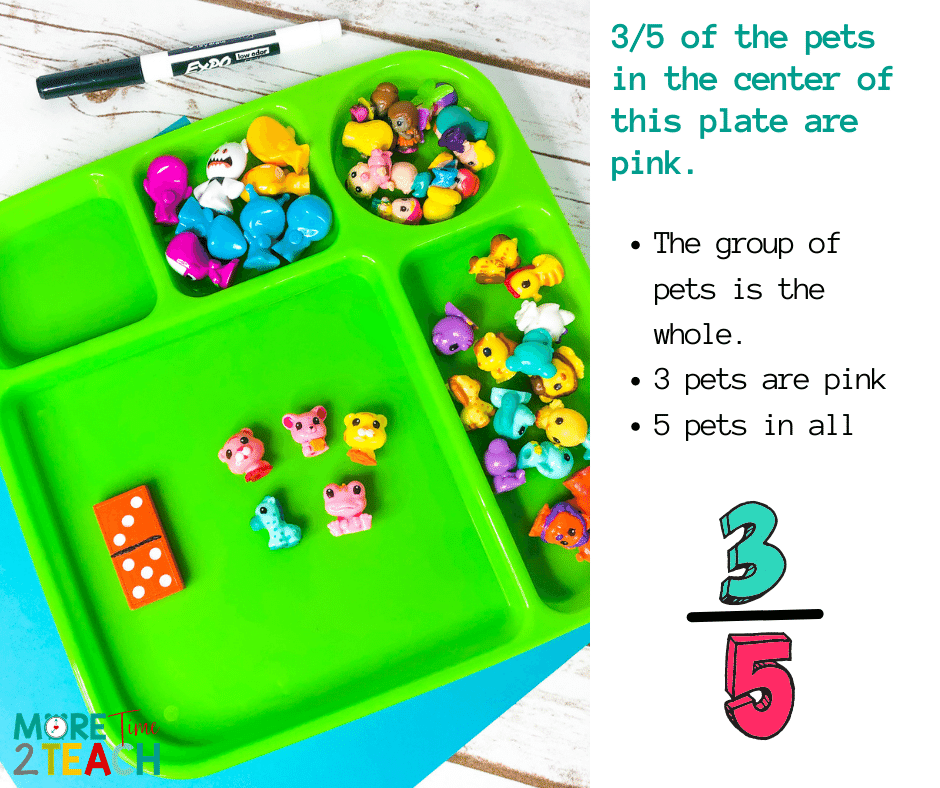
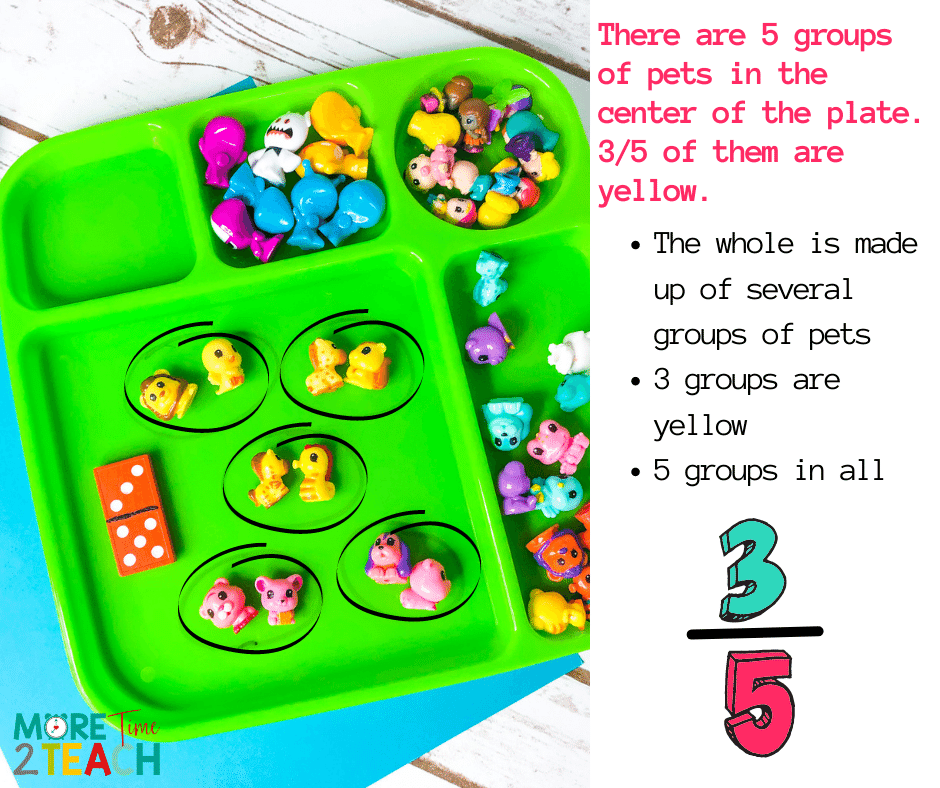
We shouldn’t be afraid to expose our kids to several ways of modeling fractions for fear that they might not understand.
Make Real Life Connections
Fractions are all around us… We just have to teach our children to look for them. For example, we use fractions to know how much of an ingredient to use when we bake or cook foods. Fractions are also used when telling time. (30 min. is 1/2 an hour. Lunch is at a half past 11:00) Fractions are also used to determine discounts when things go on sale. (A store advertising a sale in which their items are 1/2 off their original price.) Music involves fractions. (whole notes, quarter notes, eighth notes, etc…) Fractions are everywhere!

It’s important that we establish good fraction habits right from the moment we begin teaching fractions. If you’re looking for a few more ideas on teaching fractions check out my other post Fun with Fractions. I use these fraction intervention booklets in my classroom for small groups. They help me assess and provide remediation for those needing a little extra support. I’ve even sent them home with absent students so they don’t miss a beat.

These fraction task cards are also great for early finishers or those kiddos that need to be challenged.
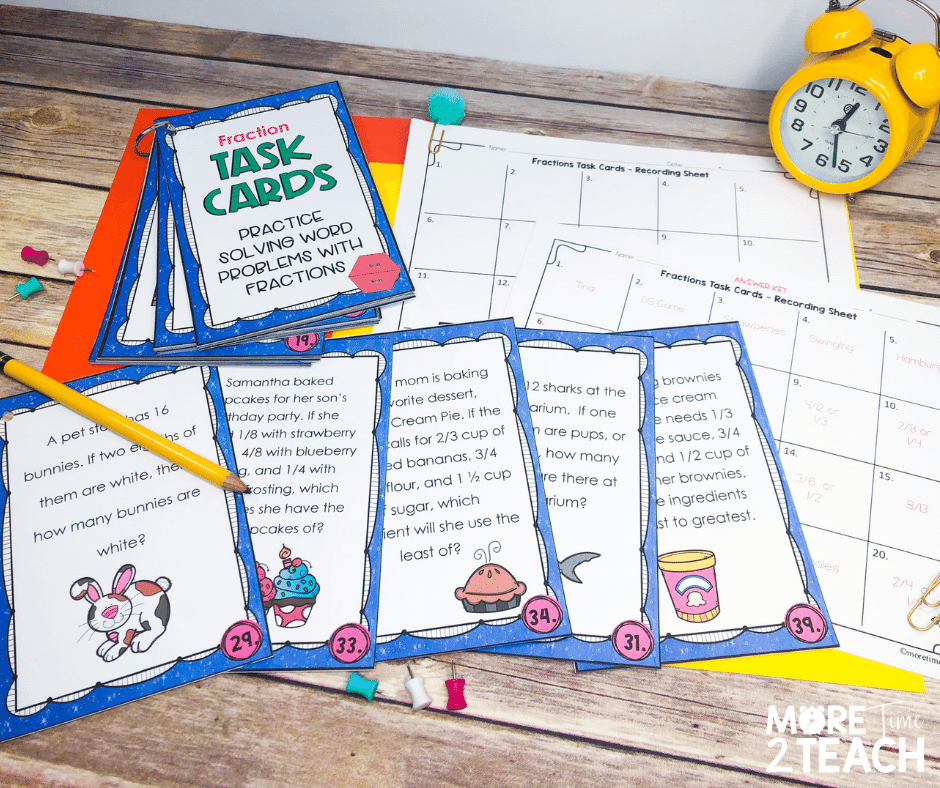
Well, there you have it. A few tips and resources for teaching students to love and understand fractions. It doesn’t have to be too scary!
If you’d like to receive more freebies like the printable fraction bars up above, simply join our newsletter by entering your home email address down below.

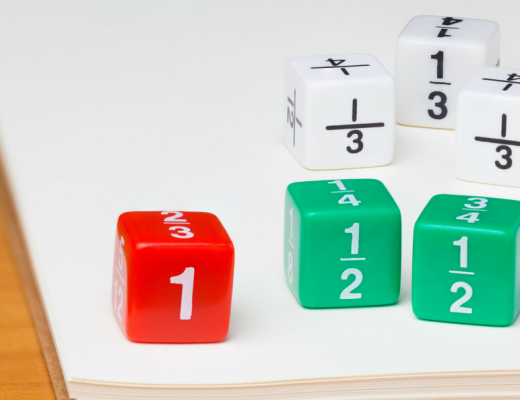
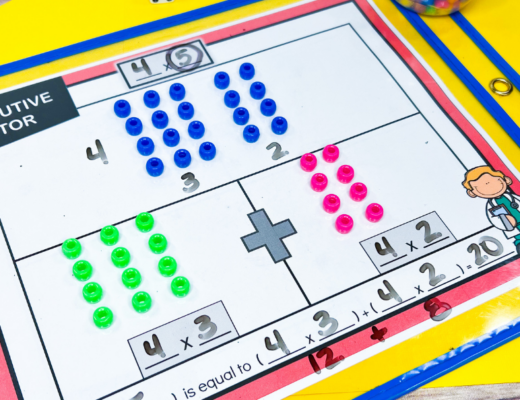
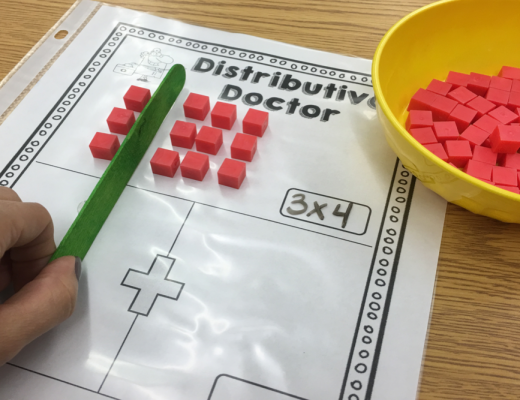
No Comments